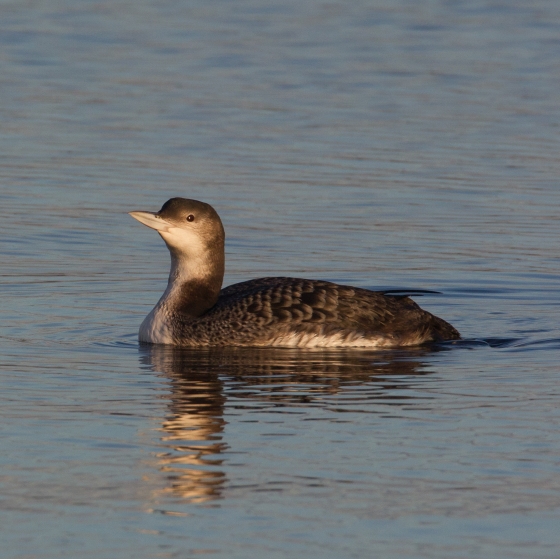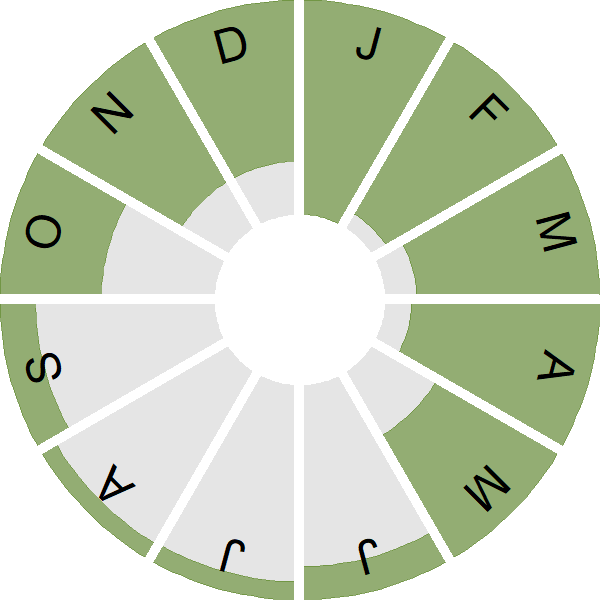Great Northern Diver

Introduction
This large heavy-billed seabird is a winter visitor to shallow coastal waters around Britain & Ireland, typically arriving during October and November.
The only European breeding population is located in Iceland, although the species has a large Nearctic breeding population that stretches from the Aleutians across Canada and on to Greenland.
Typically around 4,000 Great Northern Divers are thought to winter around our shores, with the north-west of our region hosting the greatest numbers, a pattern that reflects the global distribution of the species. Great Northern Divers wintering in the UK begin to return to their breeding grounds during April.

Key Stats
Identification
ID Videos
This section features BTO training videos headlining this species, or featuring it as a potential confusion species.
Winter Divers
Songs and Calls
Call:
Status and Trends
Conservation Status
Population Size
Population Change
Great Northern Diver is a winter visitor to our shores, found primarily along northern and western coasts and most frequently on the sheltered lochs of western Scotland, Orkney, Shetland and Northern Ireland. The peak counts for the species were recorded in the winter of 2015-16 and represented a 140% increase in the population compared with previous estimates (although the figures were still considered likely to be underestimates). Since then, WeBS data suggest a decrease in the population across the UK as a whole, although numbers in Scotland have increased in recent winters.
Distribution
Great Northern Divers are recorded in coastal waters around Britain & Ireland as well as occasionally appearing on inland wetlands. The largest concentrations during this Bird Atlas 2007–11 were found in the Northern Isles, Outer Hebrides, northwest Scotland south to Argyll, western and southern Ireland. The one mapped breeding record relates to a bird paired with a Black-throated Diver for several consecutive seasons up to 2008.
Occupied 10-km squares in UK
or view it on Bird Atlas Mapstore.
or view it on Bird Atlas Mapstore.
European Distribution Map
Distribution Change
Since the 1981–84 Winter Atlas there has been a 39% increase in the number of 10-km squares occupied by Great Northern Divers in winter. In parts of northwest Scotland, apparent gains may be a consequence of improved coverage.
Change in occupied 10-km squares in the UK
or view it on Bird Atlas Mapstore.
or view it on Bird Atlas Mapstore.
Seasonality
Wintering Great Northern Divers linger into spring, supplemented by spring passage, and occasional birds remain into summer, with return migration from September.
Weekly pattern of occurrence
The graph shows when the species is present in the UK, with taller bars indicating a higher likelihood of encountering the species in appropriate regions and habitats.

Movement
Britain & Ireland movement
Foreign locations of birds ringed or recovered in Britain & Ireland
Dots show the foreign destinations of birds ringed in Britain & Ireland, and the origins of birds ringed overseas that were subsequently recaptured, resighted or found dead in Britain & Ireland. Dot colours indicate the time of year that the species was present at the location.
- Winter (Nov-Feb)
- Spring (Mar-Apr)
- Summer (May-Jul)
- Autumn (Aug-Oct)

Biology
Productivity and Nesting
Nesting timing
Egg measurements
Clutch Size
Survival and Longevity
Survival is shown as the proportion of birds surviving from one year to the next and is derived from bird ringing data. It can also be used to estimate how long birds typically live.
View number ringed each year in the Online Ringing Report.
lifespan
Classification, names and codes
Classification and Codes
- Order: Gaviiformes
- Family: Gaviidae
- Scientific name: Gavia immer
- Authority: Brünnich, 1764
- BTO 2-letter code: ND
- BTO 5-letter code: GRNDI
- Euring code number: 40
Alternate species names
- Catalan: calàbria grossa
- Czech: potáplice lední
- Danish: Islom
- Dutch: IJsduiker
- Estonian: jääkaur
- Finnish: amerikanjääkuikka
- French: Plongeon huard
- Gaelic: Muir-bhuachaille
- German: Eistaucher
- Hungarian: jeges búvár
- Icelandic: Himbrimi
- Irish: Lóma Mór
- Italian: Strolaga maggiore
- Latvian: melngalvas gargale
- Lithuanian: ledinis naras
- Norwegian: Islom
- Polish: (nur) lodowiec
- Portuguese: mobelha-grande
- Slovak: potáplica velká
- Slovenian: ledni slapnik
- Spanish: Colimbo grande
- Swedish: svartnäbbad islom
- Welsh: Trochydd Mawr
- English folkname(s): Embergoose
Research
Causes of Change and Solutions
Causes of change
The drivers of change are unclear for this species.

